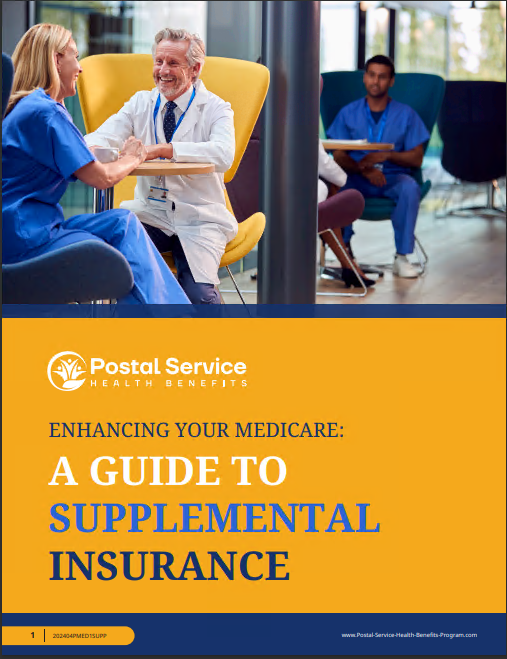Key Takeaways
- The new Postal Service Health Benefits (PSHB) program, launching January 1, 2025, replaces the Federal Employees Health Benefits (FEHB) for USPS employees and retirees, introducing some changes to how health benefits are managed and accessed.
- Open Season for PSHB enrollment runs from November 11, 2024, to December 9, 2024, allowing postal workers to review, change, or confirm their coverage options before the transition.
Big Shifts in Health Benefits Are Coming – Here’s What to Expect
As a postal worker or retiree, health benefits are an essential part of your financial well-being. You’ve been used to the Federal Employees Health Benefits (FEHB) program for years, but things are about to change. The Postal Service Health Benefits (PSHB) program, launched under the Postal Service Reform Act of 2022, will officially kick off on January 1, 2025. This means the upcoming Open Season (November 11 – December 9, 2024) is going to be especially important for you.
So, what’s the deal with the new PSHB system, and how will it affect your coverage? Let’s break it down.
What’s Happening with Your Health Benefits?
As of January 1, 2025, all USPS employees and retirees currently enrolled in FEHB will transition over to the new PSHB program. It’s not a total overhaul—many aspects will remain familiar—but you’ll want to pay close attention to what’s different. While dental and vision coverage through FEDVIP stays the same, other parts of your health benefits package will shift under the new system.
Open Season: Your Opportunity to Make Changes
Every year, Open Season allows you to review your health, dental, and vision plans. This year’s Open Season, running from November 11 through December 9, 2024, will be particularly crucial as it’s your opportunity to confirm or update your health plan under PSHB. Your current FEHB plan will be automatically shifted into a similar PSHB plan, but don’t assume it will be the best fit without reviewing your options.
The Office of Personnel Management (OPM) will offer plan comparison tools to help you make sense of the new PSHB plans and ensure you’re selecting the best coverage for you and your family.
PSHB Costs: What Can You Expect?
While healthcare costs tend to rise each year, there are a few details worth highlighting regarding PSHB premiums and how they’ll affect your wallet in 2025.
The average biweekly premium breakdown for 2025 looks like this:
- Self Only: $397.35
- Self Plus One: $858.89
- Self and Family: $934.65
The good news is that the government will continue to cover 72% of your total premium, leaving you responsible for 28%. That means, depending on your plan type, your annual employee contribution could range from approximately $2,892.76 to $6,804.20, based on biweekly payments over 26 pay periods.
While these numbers give you a sense of the overall cost, remember that additional savings may be available if you’re enrolled in Medicare Part B, which we’ll cover next.
Medicare Part B: What You Need to Know
One of the most significant changes coming with the PSHB is its connection to Medicare Part B. If you’re eligible for Medicare, especially if you’re retiring after January 1, 2025, here’s how things will play out.
-
If you retire on or before January 1, 2025, and you aren’t enrolled in Medicare Part B, you won’t be required to enroll to maintain your PSHB coverage. The same goes for any family members covered under your plan.
-
If you retire after January 1, 2025, you will be required to enroll in Medicare Part B to maintain your PSHB plan once you become eligible (usually at age 65). This requirement extends to all family members included in your coverage, so plan ahead for this shift.
Cost-Saving Potential with Medicare
For those already enrolled in Medicare Part B, many PSHB plans offer additional perks like Part B premium reimbursements or waived deductibles. This could significantly reduce your out-of-pocket medical expenses, especially if you regularly require care. Keep in mind that all PSHB plans for Medicare-eligible participants will also include Medicare Part D prescription drug coverage, so you won’t have to worry about separate Part D premiums.
FEDVIP: Dental and Vision Coverage Continues
Good news on the dental and vision front: coverage under the Federal Employees Dental and Vision Insurance Program (FEDVIP) stays the same despite the broader changes to your health benefits. You can still access routine exams, cleanings, prescription eyewear, and more.
However, it’s worth noting that FEDVIP premiums will see modest increases for 2025:
- Dental premiums will increase by 2.97%.
- Vision premiums will rise by 0.87%.
While the increase isn’t drastic, it’s always a good idea to review your FEDVIP plan during Open Season to ensure you’re getting the best deal for your needs.
What About Other Insurance Programs?
The move to PSHB won’t affect your access to other federal benefits like the Federal Employees’ Group Life Insurance (FEGLI) or the Federal Long Term Care Insurance Program (FLTCIP). Your coverage under these programs will remain intact, allowing you to maintain your life insurance and long-term care policies without any disruption.
Important Dates to Remember
With so much change on the horizon, it’s crucial to stay on top of the important dates:
- Open Season Enrollment: November 11, 2024 – December 9, 2024. This is when you can review your PSHB plan options and make any necessary adjustments.
- PSHB Program Launch: January 1, 2025. This is the official date when all USPS employees and retirees will be covered under the new PSHB program.
Don’t let these dates slip by! Missing the Open Season window could leave you stuck with a plan that doesn’t meet your needs, and that’s the last thing you want.
Why You Shouldn’t Wait
With so many changes happening, it’s easy to feel overwhelmed. But the best thing you can do is prepare early. Use the OPM comparison tools, look over your options carefully, and think about any long-term health needs that could affect your choice. Remember, your current FEHB plan will automatically transfer to a comparable PSHB plan, but that doesn’t mean you should just let it ride. Now is the perfect time to review, compare, and make sure your new health plan fits your life and budget.
Preparing for Your New Health Plan
The shift to the Postal Service Health Benefits (PSHB) program marks a significant moment for USPS employees and retirees. Open Season, running from November 11 to December 9, 2024, gives you the opportunity to review, adjust, and make informed decisions about your health coverage before the transition kicks in on January 1, 2025. By staying informed, taking advantage of tools like plan comparison resources, and reviewing how Medicare Part B impacts your plan, you’ll be better positioned to select the coverage that works best for you and your family.







